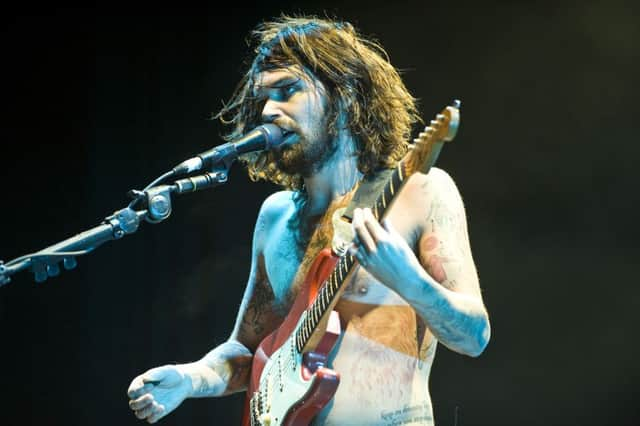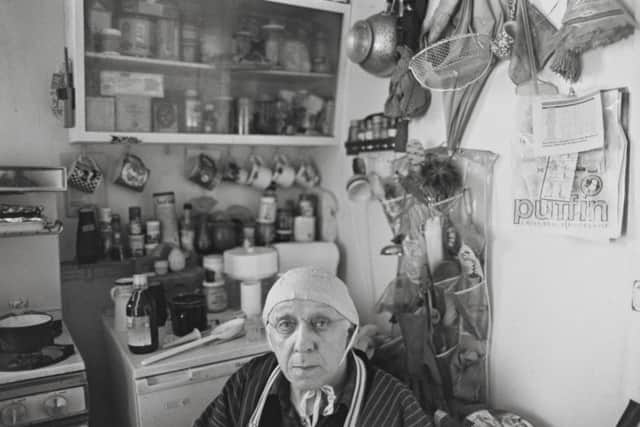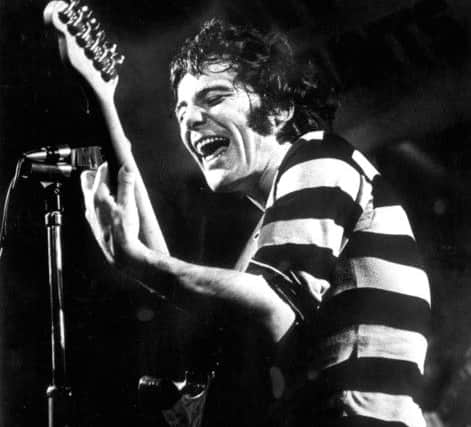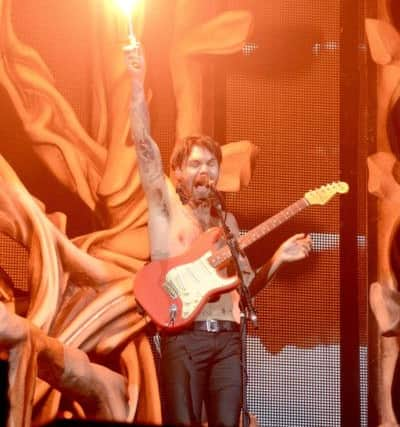Pop back in time with National Museum of Scotland's music exhibition


As an 11-year-old music fanatic in the making, I was transfixed by the classy/pretentious video for Vienna, by Ultravox, with frontman Midge Ure dramatically intoning “we walked in the cold air” as he emerged from a curtain of dry ice in Covent Garden wearing a dashing trenchcoat. I will be making a beeline to check out that very trenchcoat when it features in the National Museum of Scotland’s flagship summer exhibition, Rip It Up: The Story of Scottish Pop.
Fellow pop-pickers will have their own preferred iconic item, unleashing a torrent of precious musical memories, be it Gerry Rafferty’s guitar, hand-painted by his Paisley buddy John Byrne, or Ivor Cutler’s Indian harmonium, donated by its current owner, Capercaillie’s Donald Shaw. There will be opportunities to gawp at Franz Ferdinand’s stage robots, view Belle & Sebastian’s contentious Brit Award (swiped from under the noses of a miffed Steps in 1999) and pay homage at the Runrig display in the summer of their retirement.
Advertisement
Hide AdTouring exhibitions of David Bowie, AC/DC and Kylie’s personal collections of costumes and memorabilia have demonstrated the appetite for celebrating pop culture in a museum setting but Rip It Up embraces the greater challenge of telling the story of a nation’s popular music through a wealth of material which has been loaned, in most cases, directly from the artists themselves.


“Pop music is for many people their first entry into art,” says lead curator Stephen Allen. “It encapsulates performance, photography, graphics, all those elements of art and culture come together through pop music. It’s now been around for 50 or 60 years and it’s not going away. It changes shape and it’s never quite as good as the generation that’s gone before – we all know that...”
Rip It Up spans the generations from the 1950s to the present day, tracing the roots of rock’n’roll in the country’s dancehalls and coffee houses, the cross-pollination with folk music in the 1960s, the heavy rock and hard touring of the 1970s and the youthquake of punk which spawned a culture of independent bands and labels reflecting a more localised identity. The exhibition aims to represent the diffuse diversity of Scottish pop music down the years, placing globe-straddling stadium beasts from the Bay City Rollers to Biffy Clyro beside idiosyncratic independent artists from Young Fathers to various members of the Fence Collective.
“We have selected artists and bands who help tell that wider story,” says Allen. “Storytelling in Scottish music is very strong anyway, and I think there’s a very strong melodic and anthemic element to Scottish music as well.”
Allen talks about the exhibits with the alacrity of a true fan, despite having to deal with the vagaries of the artistic temperament – to put it politely, he has diced with some divas and flakes over the content but, happily, most of his lenders have conformed to the Scottish musician stereotype of humility and helpfulness.


“Most of them haven’t lent to museums before so this will be stuff sourced from their attics, their studios,” says Allen, “and you can see there is a close personal connection to that. The likes of the gold discs tell part of the story, but then we’ve got handwritten lyrics, original artwork, costumes…”
Advertisement
Hide AdHomemade stage outfits run up by Fay Fife and Eugene Reynolds of The Rezillos take their place beside designer threads from Shirley Manson, while modest master tapes from The Associates contrast with the huge Texas sign from the Inner Smile video.
Personal, if not quite bespoke, items include a customized jacket donated by Nazareth bassist Pete Agnew (“they essentially threw a bit of paint over it to make it look a bit more arty, apparently on the recommendation of Elton John”) and one of Alex Harvey’s signature stripey shirts (“it was originally black and white and then it went in the wash with a pair of red pants and turned pink”).
Advertisement
Hide AdThe relationship between bands and fans is explored in a number of submissions, not least Biffy Clyro’s fan flags which are thrown on to the stage wherever they play. “It shows the global reach of the band,” says Allen, “but these are also works of fan art, with one or two wee swear words we maybe won’t display… We’ve also got their smashed-up guitar from the Reading Festival in 2013. They set fire to it and it became a set piece of their act from then on with all the health and safety that that entails.”


There is also a particular poignancy around a display of personal artwork lent by Frightened Rabbit frontman Scott Hutchison before his tragic suicide a few weeks ago, which remains in the exhibition with the full blessing of Hutchison’s family.
The exhibition will be complemented by a host of related content, including a BBC Scotland documentary series and accompanying book by broadcaster and sometime musician Vic Galloway, plus seasons of gigs and films programmed by Summerhall, the Edinburgh Film Festival and the International Festival and Fringe.
The museum will also host its own gigs and events plus a series of keynote sessions bringing together the likes of Scottish music industry stalwart Bruce Findlay and author Ian Rankin in conversation. “We’re not short of raconteurs,” says Allen. (Full disclosure: I’ll be getting in on the act too, by guiding music-themed walking tours around Edinburgh.)
Even with these additional voices, Rip It Up is a carefully curated rather than comprehensive checklist of Scottish artists. You would need a whole museum for that – in fact, Allen thinks that might not be a bad idea.
“I hope this is a springboard for other museums and galleries to tell different aspects of the story,” he says. “We’ve seen the interest and excitement that addressing popular and contemporary culture generates. It taps into something which is deeply personal to people. Pop music was their gateway. Now we start to look back on it in a more heritage way, because people want to celebrate their youth. It’s not just about old, familiar tunes, it goes deeper than that.” n
Rip It Up: The Story of Scottish Pop is at the National Museum of Scotland, Edinburgh from 22 June until 25 November